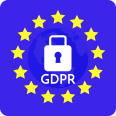Introduction to APPSeCONNECT
MODULE 1
Using a series of software applications to manage business processes has become the industry norm, but often, these applications function in isolation and hinder streamlined data flow across the entire software ecosystem.
The need for a less resource-intensive and easy-to-implement integration system led to the development of iPaaS. An iPaaS is a cloud-based platform that streamlines the process of end-to-end business application integration. An iPaaS resolves the obstacles faced by companies when it comes to business process automation.
With APPSECONNECT iPaaS, the entire team across an organisation has unified online access to a range of powerful integration and data management capabilities as listed below:
- Visual Designer to connect Apps
- Pre-packaged Apps and Integrations
- Support for Generic Protocols like REST, FTP, Databases etc.
- Multiple mode of deployment
- Data Transformation
- Data Routing and Orchestration
- Advanced monitoring and reporting
- Auditing
- Software development kit
APPSeCONNECT provides pre-packed templates which are made available by our own in house teams or our partners. The connectors are optimized following basic integration patterns and deliver standard optimized throughout when implemented for the platform.
Users is one of the main feature of APPSeCONNECT portal as this control over the access that a user has. Depending on the role of the user, the menu panel of the portal is customized such that the user can use the functionalities depending on the role allotted to him.
- We can add multiple users to a particular project on the cloud portal by clicking on ‘Users’.
- Each user will have different levels to the portal depending on the role allotted to them.
- Depending on the role, different users have different levels of permission to access the various features.
- These roles are Organisation Admin, Implementer, Partner etc.
Learn the basics of User Management in APPSeCONNECT with this Tutorial Video!
Pre-Requisites of Enviroment Management:
- To visit the ENVIRONMENT page in portal, navigate to Deploy -Environments.
- It is recommended that user should upgrade/install the latest Agent from cloud. Even though we are backward compatible, and older Agents can still communicate with server, we still ask users to upgrade to get full flavour of new features.
- Users having On Premise agents upto 4.3.0.12 will be considered as Old Agents. Users having On Premise agent version 4.4.0.0 and more will be considered as new agents.
- You must have Environment Management privilege to perform actions on the Environment Settings panel.
- By default, on landing up on the environment page, you will be selected with the hosted section. Scroll below to view more details on the Hosted section.
- Enviroments that are available on your organisation, will have the indicators that displays whether the agents are active or inactive for an On-Premise agent.
-RED indicator – Agent is either detached or inactive.
-BLUE indicator – Agent is up and Running.
- The will be no colour indicators for an Hosted Agent.
- You can group your On-Premise environments by creating Folders. The Folder names can have maximum of 100 letter counts.
- The view for the Last Deployment Log is same for both Hosted and On-Premise environment.





















